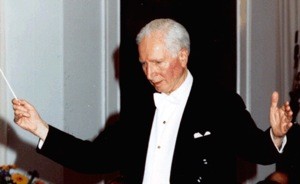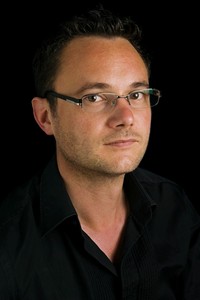
Robert Satanowski |
Robert Satanowski

When this artist first came on tour to Moscow in 1965, hardly any of the listeners who gathered in the Great Hall of the Conservatory to listen to an unfamiliar conductor suspected that Satanovsky had already been in our capital more than twenty years ago. But then he came not as a musician, but as a commander of the first Polish partisan formations fighting for the liberation of their homeland. At that time, Satanovsky did not even imagine that he would become a conductor. Before the war, he studied at the Warsaw Polytechnic Institute, and when the enemy occupied his native land, he moved to the Soviet Union. Soon he decided to fight with weapons in his hands against the Nazis, began to organize partisan detachments behind enemy lines, which became the basis of the first formations of the Polish People’s Army …
After the war, Satanovsky served in the army for some time, commanded military units, and after demobilization, after some hesitation, he decided to study music. While still a student, Satanowski worked as the musical director of the Gdansk, and then the Lodz Radio. For some time he also headed the Song and Dance Ensemble of the Polish Army, and in 1951 he began to conduct. After three years of work as the second conductor of the Philharmonic in Lublin, Satanovsky was appointed artistic director of the Pomeranian Philharmonic in Bydgoszcz. He was given the opportunity to improve under the guidance of G. Karajan in Vienna, then in the 1960/61 season he worked in the German Democratic Republic, in the city of Karl-Marx-Stadt, where he conducted opera performances and concerts. Since 1961, Satanovsky has been the chief conductor and artistic director of one of the best Polish theaters, the Poznań Opera. He constantly performs in symphony concerts, tours a lot around the country and abroad. The conductor’s favorite authors are Beethoven, Tchaikovsky, Brahms, and among contemporary composers are Shostakovich and Stravinsky.
One of the Soviet critics described the creative style of the Polish conductor as follows: “If we try to define in a nutshell the most important features of Satanovsky’s artistic appearance, we would say: noble simplicity and restraint. Free from anything external, ostentatious, the art of the Polish conductor is distinguished by great concentration and depth of ideas. His manner on the stage is extremely simple and even, perhaps, somewhat “businesslike”. His gesture is precise and expressive. When looking at Satanovsky “from the outside”, it sometimes seems that he completely withdraws into himself and plunges into his inner artistic experiences, however, his “conductor’s eye” remains vigilant, and not a single detail in the performance of the orchestra escapes his attention.”
L. Grigoriev, J. Platek, 1969




